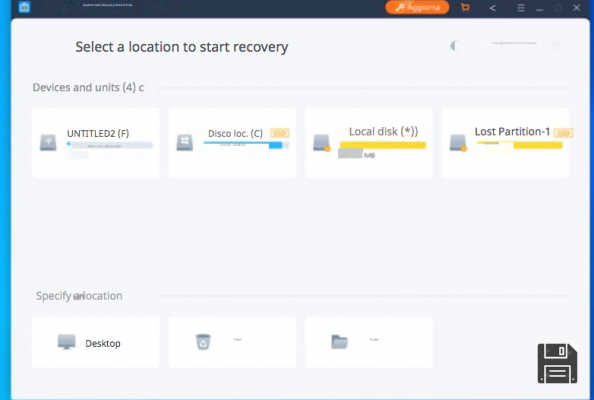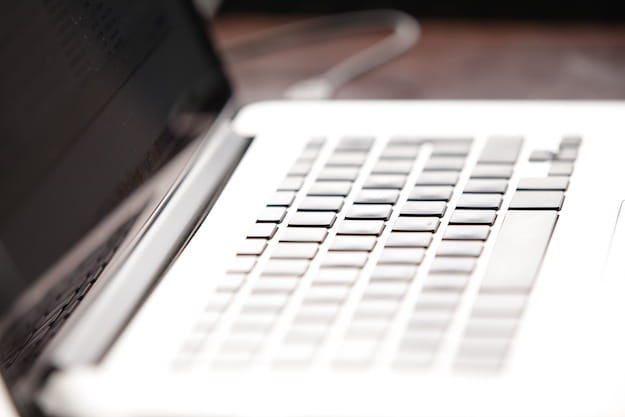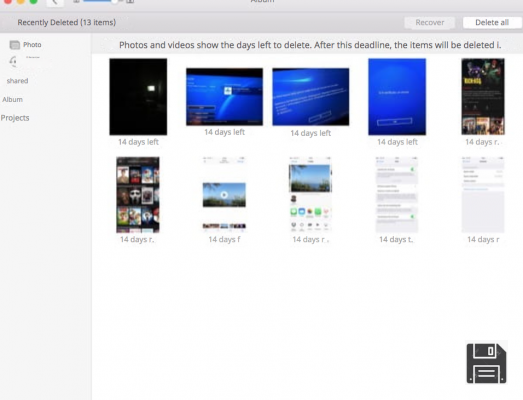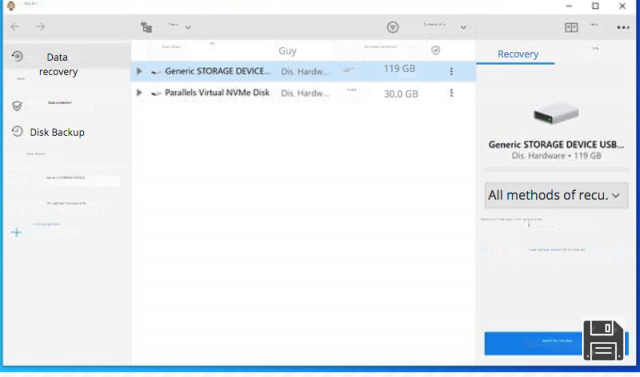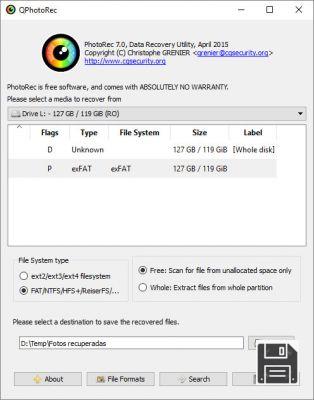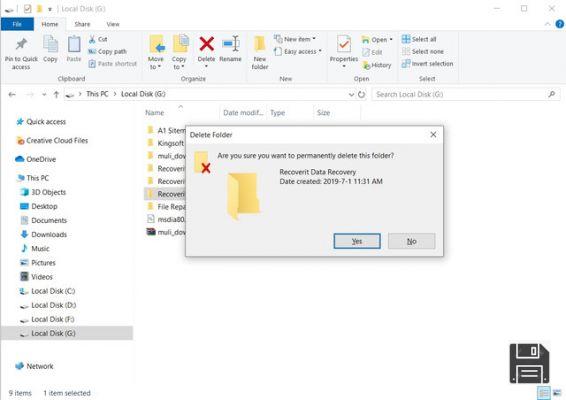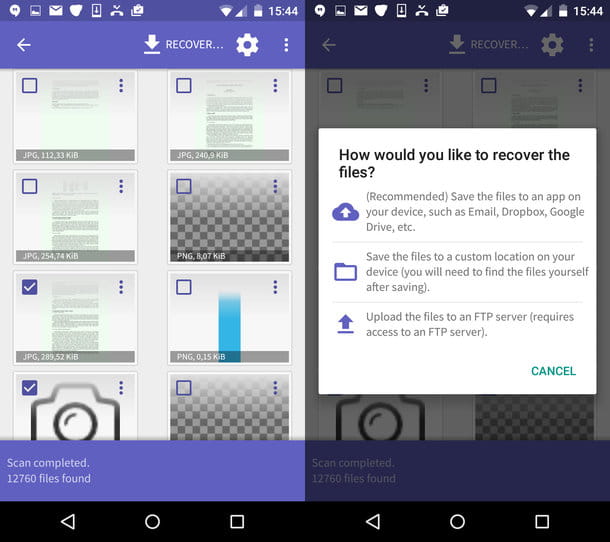It will be that the commitments follow one after the other at a frenetic pace, it will be that your desire for holidays sometimes makes you "travel" with your brain but today you have combined another: you have removed from your computer files that you should not have deleted. And now, how about it? Well, simple: let's say you can count on my help this time too! With today's guide I'm going to show you everything you can do to try to recover deleted files. I beg your pardon? Don't you think it's possible? Well, spend five minutes or a little more of your free time reading this tutorial and you'll see that in the end you'll be ready to think again.
Indeed, using some special programs to recover deleted files is a possible operation! These are free software and do not require any special computer knowledge to be used. The resources that you can use to recover deleted files that I am about to point out can in fact be exploited without any kind of problem either by those who are experts in new technologies or those who, a bit like you, are not exactly familiar with computers really.
All you need to do to get "the task" done correctly is to have a bit of luck, just enough so that the portion of the disk that housed the deleted files has not already been rewritten with other data (which would prevent you from restoring the old information correctly). So, ready for this new computer mission?
EaseUS Data Recovery Wizard (Windows/macOS)
The first program I want to recommend you to try is EaseUS Data Recovery Wizard: it's a great solution, available for both Windows and MacOS, that allows you to recover any type of deleted files from hard drives and SSDs (both internal and external), memory cards, USB devices, cameras, smartphones, tablets and other storage devices.
It also works in seemingly desperate situations like those where you are dealing with formatted or damaged disks, deleted partitions, RAW partitions, system crashes and systems attacked by malware. Moreover, it is extremely intuitive: its interface is fully translated into your language and guides you to data recovery in just three steps (boot, analysis and recovery).
EaseUS offers various versions of its software: a basic one, free, which allows you to recover up to 500MB of data (which can become 2GB, if you share the software online) and some paid, without limitations, with prices starting from 66.69 euros.
To download EaseUS Data Recovery Wizard Professional on Windows (to be activated with the purchase of a license, otherwise it shows only recoverable files, without allowing their export), connect to the EaseUS website and click on the Free Trial button; if, instead, you prefer to download the Free version of EaseUS Data Recovery Wizard (with data recovery up to 2GB), connect to this other page of the EaseUS website and click on the Free Download button.
When the download is complete, open the .exe file you got and answer Yes to the warning that appears on the screen. Then make sure that the EaseUS license conditions box (bottom left) is checked and click on the Install now button to start downloading and installing all EaseUS Data Recovery Wizard components.
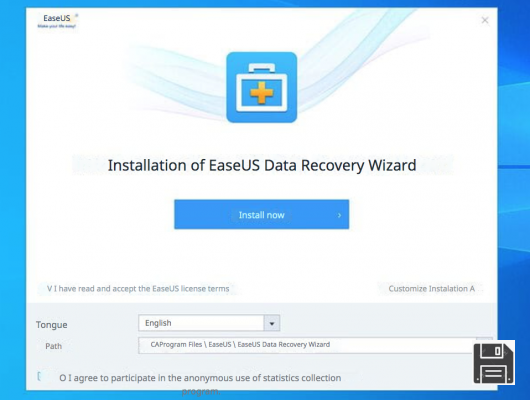
If you do not want to send anonymous usage statistics to EaseUS, expand the Customize installation section (bottom right) and uncheck the relevant box. At the end of the setup, click on Start now, to finish the procedure and access the main screen of EaseUS Data Recovery Wizard.
At this point, all you have to do is select the drive icon from which you want to recover data (or the Recycle Bin icon, if you want to recover deleted files from Windows Recycle Bin) and click on the Scan button at the bottom right to start searching for deleted files.

When the scan is complete, use the side-navigation bar to "browse" the paths scanned by the software or the various file types found, tick the boxes for the files to be recovered and press the Recover button (bottom right), to start retrieving them to a folder of your interest.
If you want, you can also view previews of recoverable files by selecting them and clicking on the eye icon in the upper right corner. Click on the Filter button (top) to filter the search results according to certain file types: Graphics, Documents, Video, Audio, Email and more.

Do you use a Mac? Then know that you can download the EaseUS Data Recovery Wizard using the links I provided earlier and clicking on the Mac version of the software. Once the download is complete, to install the program, open the .dmg package and drag and drop the EaseUS Data Recovery Wizard icon into the Applications folder of your Mac. That's it!
Recover (Windows)
If you want to learn how to recover deleted files from your PC or external storage devices such as portable hard drives, USB sticks and SD cards, you can also rely on Recuva, a software in your language that allows you to do everything through simple wizards. The program is compatible with all Windows operating systems and is available at no cost.
In order to recover deleted files with Recover the first step you need to do is to download the program to your computer. To do this, click here, then scroll down the web page that is shown to you and click the green Free Download button on the left. Next, press on CCleaner.com, click on the Start Download button and wait a few moments for the program to download to your multimedia workstation.
When the download is complete, start the program installation package, click on Yes and, once the software setup wizard window appears, select your language from the language selection menu at the bottom right and click on the Next button. Next, press Next, twice in a row, place a checkmark next to No thanks, I don't need CCleaner and click the Next button again. To finish, press the Finish button.

Wait a few moments for the Recover window to be visible on the screen (in case the program does not start automatically, double click on the icon that has been added to the desktop), then click on the Next button, select the type of files you want to recover choosing between Images, Music, Documents, Videos, Compressed, Email or All files and click on Next again.

Then tick the box next to the location where you want to search for the deleted files by choosing between I'm not sure, for all locations, On a multimedia card or iPod, in My Documents, in the Recycle Bin or In a specific location (to be indicated through the appropriate text field), click Next again and then press Start, to start the search for the deleted files.
Wait until the search process is complete and, in the list that appears, check the box next to the name of the file you want to recover. Then click the Recover... button, select the folder where you want to save the file and click OK twice in a row to confirm the operation.

Always remember to consult the icons next to the file names before proceeding with the restore operation. In fact, only files with the green icon can be recovered 100%, while those with the orange icon may be damaged. Those with the red icon are almost completely unrecoverable.
If you cannot find the files that you needed, try to reboot Recuva and perform all the steps that you have already seen to try to recover the deleted files while taking care to put a check mark on the box located next to the Enable Thorough Scan item that is visible immediately after indicating the type of documents that you are looking for. This is a special feature that, as its name suggests, performs a deeper scan of the path or drive you are interested in, and for these reasons it may take over an hour to complete in the case of very large drives.
Lazesoft Mac Data Recovery (macOS)
If you are using a Mac, you can try to recover deleted files removed from hard drive using a free application like Lazesoft Mac Data Recovery. It is very easy to use and it is extremely effective... though, this should be noted, it is not capable of performing miracles. In money, if a file has been overwritten after its deletion it will still be impossible to restore it, take it into account.
To use Lazesoft Mac Data Recovery to recover deleted files on Mac the first thing you need to do is to click here so that you connect to the web page of your interest of the software and immediately download the application to your computer. Next, click on Free Download Now! button.
When the download is complete, double click on it to open the newly downloaded file and drag the Lazesoft Mac Data Recovery icon into the OS X Applications folder to install the software on your Mac.

Once this is done, start Lazesoft Mac Data Recovery by clicking on its icon that has been added to Launchpad, type in your user account password on OS X and click OK, then wait for the program window to be visible on screen and press Undelete button. Then select the entry related to the drive from which you want to recover deleted files (e.g. Macintosh HD, for Mac internal hard drive), click Finish and wait for the drive to be scanned. The duration of the operation will depend on the size of the drive to be scanned and the performance of the computer in use.
When the scan is complete, to recover deleted files, expand the Lost File Results folder in the left sidebar and select the type of file you want to restore. If a file that you intend to recover is not located in Lost File Results folder, try to search for it in Lost or its source folder by selecting the respective paths from the sidebar of Lazesoft Mac Data Recovery. Then, put a check mark next to the names of the objects to be recovered, click on Save Files button located at the top right and choose the folder to copy the files to. By going to File type tab you can browse the files directly by their extension, instead using the search bar located at the top you can quickly search for the objects to be recovered by their names.

Please note that not all recoverable files are intact, so not all of them can be opened properly after the recovery operation. To make your work easier and find out immediately which files are healthy, I suggest you take a look at the preview included in Lazesoft Mac Data Recovery which appears automatically when you select an item within the program. Also, I suggest you not to try to recover deleted files that have less weight than they should have.
TestDisk (Windows/macOS/Linux)
If you have not deleted valuable files from your Windows PC or Mac, but from the SD card on your smartphone or digital camera, you can try to take care of it by downloading TestDisk. It is a free, cross-platform application (available for Windows, OS X and even Linux) that allows you to recover deleted files effectively by working on memory cards and other storage drives. It works as a command line, it is in English but I assure you that it is not at all difficult to use.
To recover deleted files using TestDisk the first thing you need to do is to download the software. To do this, click here so that you can immediately connect to the official web page of the program, then click on the label indicating the operating system in use on your computer and wait for the download of the program to be completed.
Next, open the archive just downloaded and extract the contents to any folder. Then insert the SD card from which you want to recover the files into your PC's reader and start the testdisk_win.exe executable. In the window that opens, click the Yes button and press the Enter key on your PC keyboard.
At this point, select the drive for your computer's memory card reader (e.g. Multiple Card Reader) using the arrow keys on your keyboard and press Enter. Then go to Intel and press Enter, select Advanced and indicate the partition of the memory card you want to scan to find the deleted files to recover (there should only be one).
You will be shown a list with all the files on the device: deleted files are written in red. Then use the directional arrows on the keyboard to select and restore them by pressing the C key twice in a row.

All data recovered from TestDisk is automatically saved in the folder where you previously extracted the program.
Other solutions to recover deleted files
The programs to recover deleted files that I proposed in the previous lines were not to your liking? If the answer is yes, before you throw in the towel permanently I suggest you take a look at my tutorial on hard drive data recovery, and the one on how to recover deleted files from Recycle Bin.






